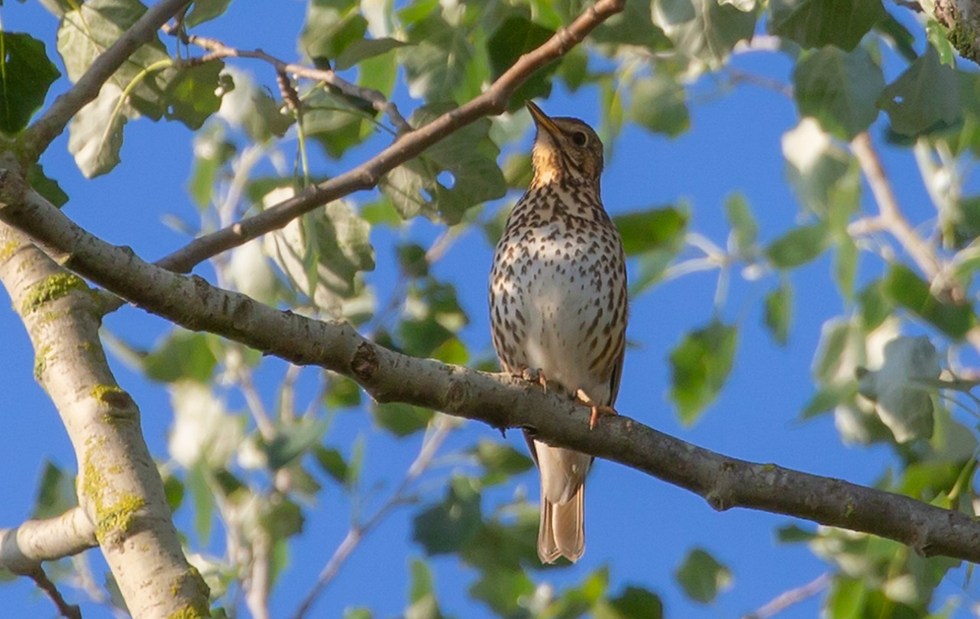Song thrush - April 2021
- Wildlife Friendly Otley

- Apr 1, 2021
- 2 min read

The Song Thrush is a familiar bird, brown above, with a white belly covered in black, drop-shaped spots, they are a smaller bird than the Mistle Thrush. Until we built all our houses and gardens everywhere, song thrushes were woodland birds, relying on their song to advertise their territory occupancy and health to neighbours and potential mates. In habitats that can be dark and visually obstructive, a good song makes sense. As their name suggests, song thrushes have a very distinctive song which is loud and varied, each phrase is repeated at least two times and can differ slightly from bird to bird.

Song thrushes are less common than they once were but are still regular garden visitors, they can also be seen in parks, woodland and farmland hedgerows, anywhere with trees and bushes where they can search out invertebrates in the summer and fruit and berries in winter. They’re famous for their habit of bashing snails on an ‘anvil’ to crack the shells, so if you find fragments of snail shells gathered near a large stone in your garden, it probably means there’s a song thrush around. They’ll also happily take garden offerings of bruised apples and mealworms, but as they’re timid, you’ll often see them being bullied away by blackbirds and other members of the thrush family.

Song thrush nests are built entirely by the females, who build a neat and tidy cup-shaped nest in trees close to the trunk, made from twigs, grass, and moss and lined with mud, rotten wood, and dung. Nests can take up to three weeks to build, incubation of the eggs then takes 14 days, the chicks then spend a further 14 days in the nest before fledging. Both parents take care of the chicks, and may sometimes have a second and even third brood, of up to five sky-blue eggs with black spots, each egg weighs 6 grams of which 6% is shell. Though the sexes are similar in appearance, the female is slightly heavier than the male and tends to be more heavily spotted.

Song thrushes are widespread throughout Europe, and as far east as Siberia, northern populations are migratory, heading to Africa, whereas our song thrushes tend to be residents. In fact ringed song thrushes in the UK have been found to only move within 1 kilometre within their whole lifetime! Large numbers of Continental birds, mainly from Belgium and Holland, winter in southern England. Tragically, hunting migratory song thrushes has long been a popular sport in southern Europe and remains legal in France and Spain.






Comments